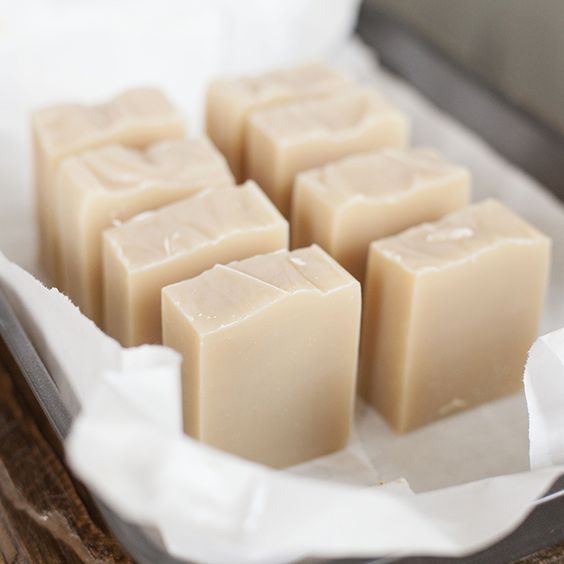The soapmaker’s philosophy: Cold process

Cold Process soapmaking is the act of mixing fixed oils (common oils include Olive, Coconut and Palm) with an alkali (Sodium Hydroxide or Lye). The result is a chemical process called saponification, where the composition of the oils change with the help of the lye to create a bar of soap. One of the main benefits of cold process soapmaking is having complete control over the ingredients. Depending on the ingredients you use, cold process soapmaking typically yields a long-lasting bar of soap. A downfall is that due to the chemical process, there are serious safety considerations to take into account and not all fragrance oils, essential oils, and colorants survive in cold process, thus limiting design options. Plus, patience is a virtue as this process involves a 4-6 week curing time. for more info
Following the French SAP charter, the cold soap process is based on different aspects:
I. Composition: Cold soap is composed mainly of sodium salts of fatty acids, water and glycerine. Its total fatty acid content must be greater than or equal to 63%, its water content less than or equal to 15%. Glycerin is produced during the saponification reaction and can not be added or removed from the soap.
Cold soap may contain other constituents. Cold soap is a 4% fat-greased soap. This percentage of non-saponified free fatty substances is expressed as an addition of fatty substances relative to the initial loading or by reduction of the quantity of soda or a combination of the two.
II. Aspect :Cold soap is a hard soap at 20 ° C, presented in pieces in different shapes, sizes, colors and perfumes.
III. Method of preparation :Cold soap is a soap obtained by saponification of triglycerides (oils, butters, fats), melted and mixed with a sodium hydroxide solution.
Cold soap is a soap prepared without release, the glycerol formed remaining in the mass of the soap.The heat produced by the exotherm of the saponification reaction and a so-called “cure” period make it possible to obtain the total disappearance of the sodium hydroxide in the finished product. The minimum duration of the curing period is 4 weeks, the duration corresponding to optimum drying. However, it is recalled that the disappearance of sodium hydroxide can only be ensured after verification by appropriate means.
IV. Raw materials :Cold soap is prepared from virgin or refined triglycerides (oils, butters, fats). They must be of cosmetic, pharmaceutical or food quality.The introduction of fatty acids into the feed is permitted at the maximum level of 4% of the total fat weight.
V. Other constituents:The profession prohibits the use of a certain number of ingredients:
NO EDTA – NO BHT – NO Synthetic Conservatives – NO Mineral oils – NO PEG
High quality soap base. Oils used for Soap base decide the quality of the soap. We use best quality organic oils for our soap base. These are organic oils of coconut, virgin olive, sunflower or rapeseed. All our soap base are enriched by organic unfiltered Shea butter up to 25%.
5% Superfatting: In French charter of cold process soap issued by Institut De Savon, 4% of superfatting is required for safety and for the mildness of the soap. Our cold soap contains 5% more oil than necessary. These are high quality oils for the skin which are added in addition at the end of mixing procedure to remain as much as possible unsaponified in the soap.This excess fat in the soap softened and restores the lipid film of the skin. It is also the assurance that the soda is completely transformed into soap.
A little explanation about superfatting….
Soapmaking is a science. Each oil has its own saponification value, or the amount of lye it takes to turn 1 gram of oil into 1 gram of soap. The mathematical formula : (Oil Amount) x (SAP value) = Lye Amount needed. For example, it looks like this (100g Olive Oil) x (0.134) = 13.4g lye. So, it takes 13.4g of lye to turn 100g of Olive Oil into soap. There will be no extra oil left.This is called a 0% superfat or a 0% lye discount. In above example, 5% superfatting means 105g oils is used instead of 100g oil, the 5g oil will be left in the soap, not saponified. Or alternatively this can be achieved by reducing the use of lye.
8.5% glycerin : According to charter of French cold process soap, We cannot add or take away the glycerin created during the saponification reaction. This vegetable glycerin in our soap has excellent moisturizing properties. Being hydrophilic, glycerine hydrates by fixing moisture on the skin. It brings a benefit on all skin and especially on dry skin.
Reference: official charter of SAVON A FROID issued by French Institut de Savon Version N°3 2012.
- Ecrin de Fleur Lavender Soap
- Cold process soap
- Cutting soaps






Leave a comment